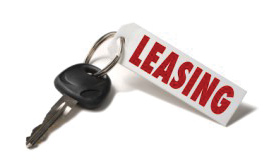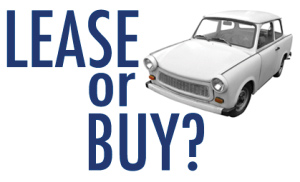WHY “SIGN AND DRIVE” AUTO LOANS ARE NEVER A FREE RIDE

By Stacey Bumpus
If you’ve been on the prowl for an auto loan in recent years, you’ve probably heard the words sign and drive. The definition seems pretty straightforward: you sign on some dotted line then drive away in the car of your dreams. But is the concept of sign and drive really that simple? What steps are required to qualify for this type of deal? Is it right for everyone?

Sign and Drive: What Does It Really Mean?
Have you been watching your favorite show on TV when, during the commercial break, you see the car of your dreams zooming along a lone desert road showcasing some of the most amazing angles ever featured on a vehicle? Before the commercial ends, you realize this is the car you’ve got to have. Especially, since the automaker is promoting a great sign and drive deal.
But what exactly is a sign and drive deal? It is a leasing option offered by automakers.
Leasing a car means you agree to pay for a vehicle that you won’t eventually own and, in return, you make smaller monthly payments than a person who has purchased the same vehicle.
However, the difference between a standard lease and a sign and drive leasing agreement is that the latter allows you to drive away with no money down. Or does it?
What You Should Know about the Sign and Drive Lease
Taking on a sign and drive lease seems to be too good to be true. Who wouldn’t want to show up at a dealership, sign up for a car that requires no money down, then drive away in an amazing vehicle? But if you’re thinking of running to your nearest dealership, keep in mind that the process isn’t that cut and dry.
As with any other circumstance that requires you to spend your money, it’s critical that you read the fine print on a sign and drive lease. The first thing you’ll discover is that, unless you have an impressive credit score, it’s going to be difficult for you to even qualify for this type of deal.
Don’t believe it? The next time you find a deal look for the asterisk then scroll down to the fine print. Most likely, it will read something to the effect of “For well qualified buyers when financed through XYZ Financial. Not all buyers will qualify.”
This is due to the fact that auto dealers aren’t willing to bet on a person with poor credit making car payments without a security deposit or down payment.
Also, it’s important to note that most sign and drive deals require taxes, as well as title and registration fees usually at the time of signing. In other words, you’re probably not driving away from a dealership without paying a dime.
Another thing to note is that sign and drive lease deals make up the difference you’re not paying up front in your monthly payment. For instance, a no money down contract could result in $280 in monthly payments, but if you were to pay $2,600 at lease signing your monthly payment could be reduced to $199 per month
And like most lease specials, a sign and drive usually requires that you settle for a specific lease term, 27 months, 35 months, etc., and abide by specific mileage guidelines, e.g., Drive no more than 12,000 miles per year to avoid higher fees.
Not to mention that the deals are usually advertised for base level vehicles meaning the feature packed car you saw on the commercial will probably not be included in the deal at the advertised price.

Look for the Best Lease Deals or Buy a Car?
Getting your hands on the best lease deals available is a matter of doing your homework. You may want a sign and drive deal, or are fine with the option that requires a down payment. Either way, it’s important that you make no decisions in haste.
For instance, you may find a VW sign and drive deal that offers all of the perks you’re looking for, but the monthly payment is too high. Or you may love a standard lease deal with a down payment included, but need more miles per year included which will hike the price higher than you intended to pay.
Also, it’s important that you consider whether you want to lease a car at all. It’s no secret that leasing isn’t for everyone. In fact, according to CNW Marketing Research, only 18.5 percent of people lease their vehicles while a whopping 70.5 percent opt to finance their cars for eventual ownership.
The reason some people prefer to buy is obvious - they don’t have to give their vehicles back once the term ends. But for a person who prefers to trade cars in every few years more money can be saved by making smaller monthly payments through a car lease.
So before deciding whether to accept the terms of a sign and drive lease, assuming you qualify, or any type of leasing option, it’s important to look at your personal circumstances to determine how long you plan to keep the car, whether you want to resell eventually, and how much you plan to spend in the short and long term.
Making these determinations can help you decide whether leasing under any condition is right for you.

© 2013 TLC Magazine Online, Inc. |